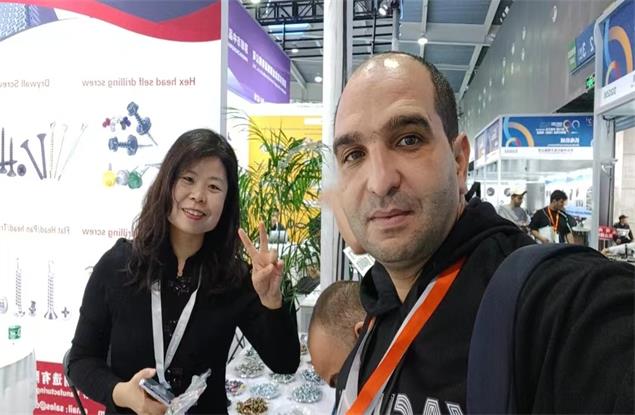odm spring washer or flat washer first
Understanding the Role of Spring Washers and Flat Washers in Mechanical Applications
When it comes to fastening components in mechanical assemblies, choosing the right washer is crucial for ensuring proper load distribution, reducing wear, and preventing loosening over time. Among the various types of washers available, spring washers and flat washers are two of the most commonly used. But when faced with the decision of which washer to use first in an assembly, understanding their roles can help in making the right choice.
What is a Spring Washer?
A spring washer, often referred to as a wave washer or a disc spring, is designed to exert a force between the nut and the bolt head or between other fastening components. It typically has a curved or wavy design which allows it to maintain tension even when subjected to vibration or cyclic loading. This characteristic can be essential in applications where movement or load changes may cause a standard bolt to loosen over time.
Spring washers are particularly effective in environments that experience significant vibration, such as in automotive and aerospace applications, where maintaining tightness in fasteners is critical for safety and performance. The spring action helps to absorb shocks and counteract any tendency for the fastening joint to loosen, providing a long-lasting hold.
What is a Flat Washer?
On the other hand, a flat washer is a simpler component, typically a thin disc made of metal or plastic. Its primary function is to distribute the load of a threaded fastener, such as a screw or bolt, over a larger surface area, thus preventing damage to the material being fastened. Flat washers help to prevent the fastener from pulling through the material and can also help in reducing friction between the fastener and the surface it’s being tightened against.
Flat washers are versatile and widely used across many applications, from general construction to electronics. Their ability to create a smoother surface interaction can reduce the chances of abrasion and wear on materials, making them crucial in maintaining the integrity of various assemblies.
Which to Use First Spring Washer or Flat Washer?
odm spring washer or flat washer first

When considering the application and effectiveness of spring washers and flat washers, the order in which they are used can significantly impact the performance of the fastening system. In many cases, engineers and technicians must decide whether to place a flat washer first before a spring washer or vice versa.
Using a Flat Washer First
Placing a flat washer before a spring washer is often advisable in situations where load distribution is a concern. The flat washer serves to distribute the load more evenly across the surface of the material, which can be particularly important in softer metals or delicate materials. It can also protect the surface against the stresses introduced by the spring washer, reducing the risk of deformation or damage.
Additional benefits of this configuration include minimizing friction during tightening and reducing the likelihood of galling—where fasteners can seize due to friction when made of similar materials.
Using a Spring Washer First
However, there are scenarios where using a spring washer first can be beneficial. In high-vibration applications, a spring washer placed directly against the bolt or nut can create a more effective locking action, ensuring that the fastener remains tight even under dynamic loads. This approach is particularly useful in automotive and machinery applications where parts are exposed to constant motion and shock.
Conclusion
In conclusion, the decision to use a spring washer or a flat washer first depends largely on the specific requirements of the application at hand. While spring washers are invaluable for maintaining tension and preventing loosening in high-vibration environments, flat washers provide essential load distribution and surface protection. Understanding the distinct roles and advantages of each type will enable engineers and technicians to make informed choices that enhance the reliability and longevity of their mechanical assemblies.
-
Top Choices for Plasterboard FixingNewsDec.26,2024
-
The Versatility of Specialty WashersNewsDec.26,2024
-
Secure Your ProjectsNewsDec.26,2024
-
Essential Screws for Chipboard Flooring ProjectsNewsDec.26,2024
-
Choosing the Right Drywall ScrewsNewsDec.26,2024
-
Black Phosphate Screws for Superior PerformanceNewsDec.26,2024
-
The Versatile Choice of Nylon Flat Washers for Your NeedsNewsDec.18,2024










